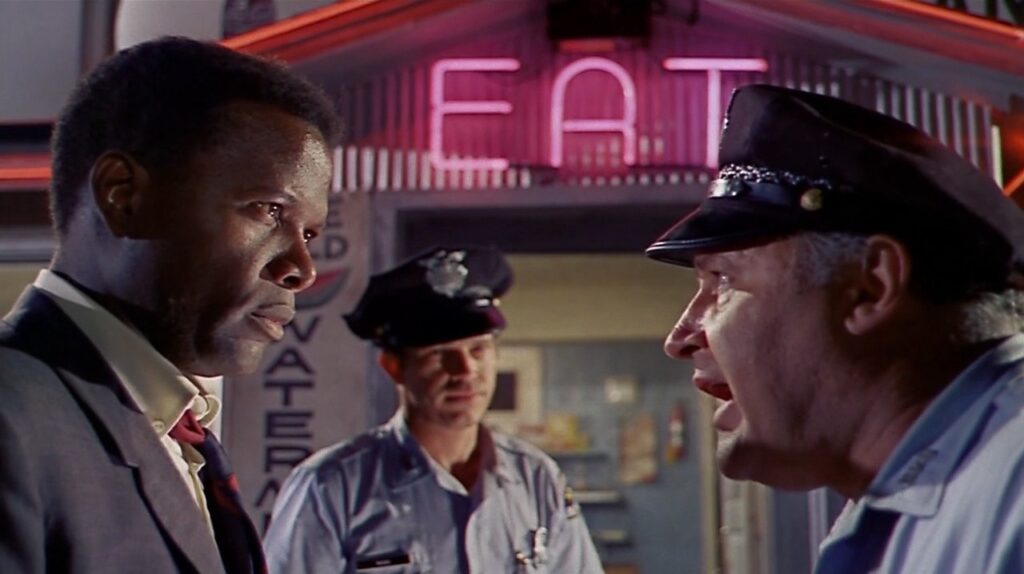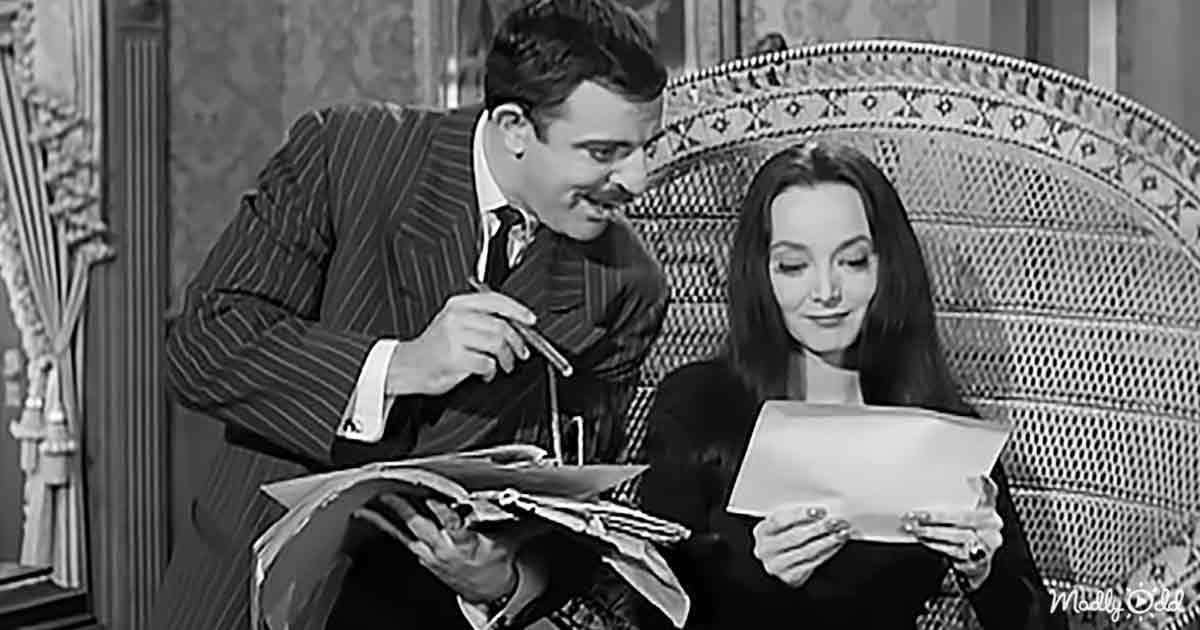O que seria do cinema sem as duplas dissonantes?
Pessoas que são como yin e yang, mas estão juntas por alguma razão, em uma
missão ou para resolver um problema. Pessoas que são unidas pelo destino, pela
providência ou qualquer outra crença. A primeira dupla dissonante que me vem à
mente são o Gordo e o Magro – Laurel & Hardy – mas assim como eles há dúzias
de duplas juntas para resolverem algumas belas bagunças. Isso acontece num dos
mais icônicos filmes da década de 1960, “No Calor da Noite”.
What would be of cinema if there weren’t mismatched duos? People who are like yin and yang, but are together for some reason, on a mission or solving a problem. People who are reunited by fate, providence or whatever else you believe in. The first mismatched duo that comes to my mind are Stan Laurel and Oliver Hardy, but like them there are dozens of duos together to solve a nice mess. This happens in one of the most iconic films of the 1960s, “In the Heat of the Night”.
Virgil Tibbs (Sidney Poitier) chega de trem uma
noite em Sparta, Mississippi. Ele mal havia descido do trem quando é conduzido
à delegacia de polícia local como suspeito de assassinato. Mas é claro, pensa o
policial Sam Wood (Warren Oates), pois trata-se de um homem negro estranho com
dinheiro demais na carteira. Tibbs, ele próprio um policial na Pensilvânia,
estava apenas esperando o próximo trem para Memphis, para ir visitar a mãe.
Virgil Tibbs (Sidney Poitier) arrives by train one night in Sparta, Mississippi. He barely got down the train when he’s taken to the local police station as suspect for a homicide. Of course, thinks police officer Sam Wood (Warren Oates), because he’s a foreign black man with too much money on his wallet. Mr Tibbs, himself a police officer in Pennsylvania, was just waiting for the next train to Memphis, to visit his mother.
Acontece que Virgil Tibbs é um perito em homicídios,
como seu chefe conta aos policiais que o prenderam. De repente, Tibbs, de
suspeito torna-se investigador do assassinato do Sr Colbert, um homem rico. Ele
trabalhará ao lado do chefe de polícia Bill Gillespie (Rod Steiger), que é o
yin do yang representado por Tibbs.
Virgil Tibbs happens to be an expert in homicides, as his boss tells the police officers who arrested him. Suddenly, Tibbs goes from suspect to investigator in the murder of Mr Colbert, a rich man from the town. He’ll work alongside chief of police Bill Gillespie (Rod Steiger), the yin to Tibbs’s yang.
Na manhã seguinte, Bill e seus homens encontram
a carteira do Sr Colbert com um homem, Harvey (Scott Wilson), que tentava
escapar para o Arkansas. O suspeito é detido e o caso considerado solucionado
por Bill. Mas não está certo, insiste Tibbs, pois Harvey é canhoto e o Sr
Colbert foi morto por uma pessoa destra. Vendo Tibbs em ação, a Senhora Colbert
(Lee Grant) insiste que ele continue na investigação. Bill não quer trabalhar
com Tibbs, mas este é um “mal” necessário.
The following morning, Bill and his men recover Mr Colbert’s wallet with a man, Harvey (Scott Wilson), who intended to escape to Arkansas. The suspect is arrested and the case is considered solved by Bill. But it isn’t, Tibbs insists, as Harvey is left-handed and Mr Colbert was killed by a right-handed person. Seeing Tibbs in action, Mrs Colbert (Lee Grant) insists that he keeps investigating the case. Bill doesn’t want Tibbs working with him, but the needs Tibbs nevertheless.
Harvey é mais hostil com Tibbs do que com Bill.
Quando os dois ficam presos na mesma cela – porque Tibbs estava “escondendo
evidências” – Harvey pergunta a ele “o que você está fazendo nestas roupas de
homem branco?”. É claro que ninguém seria super simpático estando preso acusado
de um crime, mas é em momentos como este que as pessoas mostram como são de
verdade – e quais os seus preconceitos.
Harvey is more hostile towards Tibbs than Bill. When the two men share a cell – because Tibbs was “hiding evidence” – Harvey asks him “what are you doing wearing white men’s clothes?”. Of course nobody would be fully sympathetic while in a cell accused of a crime, but it’s in moments like those that the people show their true colors – and prejudices.
O próprio crime pode ter a ver com racismo. O
Sr Colbert foi para Sparta para construir uma fábrica, onde ele empregaria mil
pessoas, metade delas negras. Por enquanto, as únicas pessoas negras na cidade
são o mecânico e sua família e os trabalhadores que colhem algodão na
propriedade do Sr Endicott – ao passar por eles, Bill até mesmo provoca Virgil
dizendo “nada disso foi feito para você, né?”.
The crime itself may be linked to racism. Mr Colbert went to Sparta to build a factory, where he would hire a thousand men, half of them black. For now, the only other black people in town are the mechanic and his family and those picking cotton at Mr Endicott’s property – passing them, Bill even teases Virgil by saying “nothing of this is for you, uh?”.
Apesar de sua resistência contra Tibbs, Bill
acaba o salvando quando um grupo de jovens delinquentes, dirigindo um carro com
a bandeira confederada na placa, começa a atacar Tibbs num barracão
aparentemente abandonado. Tibbs sofre preconceito em muitos outros momentos,
como quando o atendente do restaurante se recusa a servi-lo, mas estas coisas
são consideradas “normais” por Bill e os demais.
Despite his resistance against Tibbs, Bill ends up saving him when a group of young troublemakers, driving a car with the Confederate flag in the plaque, starts attacking Tibbs in a seemingly abandoned hangar. Tibbs suffers prejudice in many more moments, like when the restaurant clerk refuses to serve him, but these things are deemed “normal” by Bill and the others.
A música é do incomparável Quincy Jones, com a
canção de abertura cantada por outra lenda, Ray Charles – esta canção alcançou
o TOP 40 da Billboard quando o filme foi lançado. AS letras das canções são de
Alan e Marilyn Bergman, que se casaram em 1958 e ficaram juntos por 64 anos. “No
Calor da Noite” foi o pontapé inicial para o sucesso do casal no mundo do
cinema, e eles mais tarde ganhariam três Oscars.
The music is by the incomparable Quincy Jones, with the title song sung by another music legend, Ray Charles – this song made it to Billboard’s TOP 40 when the movie was released. The lyricists are Alan and Marilyn Bergman, a couple who married in 1958 and were together for 64 years. “In the Heat of the Night” was the couple’s breakthrough in the movie industry and they would go on to win three Oscars.
O editor do filme é Hal Ashby, também
assistente do produtor, e que iria se tornar um diretor de sucesso. Ashby
ganhou o Oscar de Melhor Edição por “No Calor da Noite”, sendo este o
acontecimento que coroou sua parceria com o diretor Norman Jewison, que
convenceu Ashby a se aventurar também na direção. Um dos filmes de maior
sucesso de Ashby na direção foi “Amargo Regresso” (1978).
The editor of the film is Hal Ashby, also assistant to the producer, who would go on to become a successful director. Ashby won the Best Editing Oscar for “In the Heat of the Night”, being this the crowning achievement of his partnership with director Norman Jewison, who convinced Ashby to try directing as well. One of Ashby’s greatest hits as director was “Coming Home” (1978).
A escolha do elenco foi feita por Lynn Stallmaster.
De acordo com o IMDb, George C. Scott era a primeira escolha para interpretar
Bill Gillespie, mas estava gravando outro filme. A Robert Mitchum foi oferecido
o papel, mas ele o recusou. Rod Steiger, escalado em seu lugar, ganhou o Oscar
de Melhor Ator naquele ano. Por outro lado, a Wikipedia, citando o AFI –
Instituto de Cinema Americano – diz que Poitier e Steiger foram as primeiras
escolhas para os papéis e, sendo velhos amigos, queriam muito trabalhar juntos.
The casting was done by Lynn Stallmaster. According to IMDb, George C. Scott was the first choice to play Bill Gillespie, but was working in another movie at the same time. Robert Mitchum was offered the role, but refused it. Rod Steiger, cast instead, went on to win the Best Actor Oscar that year. On the other hand, Wikipedia, quoting the American Film Institute, says that Poitier and Steiger were the first choices for the roles, and, as old friends, were looking forward to working together.
Eu ouvi numa aula recentemente que os filmes de
Sidney Poitier trazem uma “narrativa de assimilação”, o que quer dizer que seus
personagens são construídos de tal maneira, com tantas qualidades e nenhum
defeito, que as pessoas brancas não têm outra opção a não ser aceitar aquele
homem negro perfeito entre elas. Isso acontece novamente em “No Calor da Noite”
e inclusive foi apontado por catedráticos que Tibbs é uma figura messiânica trazendo
uma comunidade inteira de volta à vida.
I heard in a class recently that Sidney Poitier’s movies bring an “assimilation narrative”, that is to say that they paint his characters with so many qualities and no bad characteristic that white people have no other option than to accept that perfect black man among them. This happens again in “In the Heat of the Night” and it has even been pointed out by scholars that Tibbs is a messianic figure bringing a whole community back to life.
“No Calor da Noite” ganhou cinco Oscars e está
presente em diversas listas da AFI de melhores filmes e personagens – Tibbs é o
número 19 na lista da AFI de 50 heróis mais inspiradores do cinema. O filme é
famoso por uma fala dita de maneira raivosa mas demonstrando muita
personalidade: “They call me MISTER Tibbs!” Mas, como o Oscar provou, este é um
filme tanto sobre Bill Gillespie quanto sobre Virgil Tibbs, pois eles formaram
uma verdadeira dupla dinâmica.
“In the Heat of the Night” won five Oscars and is
cited in several AFI lists of best movies and best characters – Tibbs is the
number 19 in the AFI list of 50 most inspiring screen heroes. The film is
famous for the line with an angry delivery and a lot of personality: “They call
me MISTER Tibbs!”. But, as the Oscar proved, this is as much a film about Bill Gillespie
as it is about Virgil Tibbs, because they were truly a powerful duo.
This is my contribution to The Mismatched Couples
blogathon, hosted by Gill and Barry from Realweegiemidget Reviews and
Cinemathic Catharsis.






































